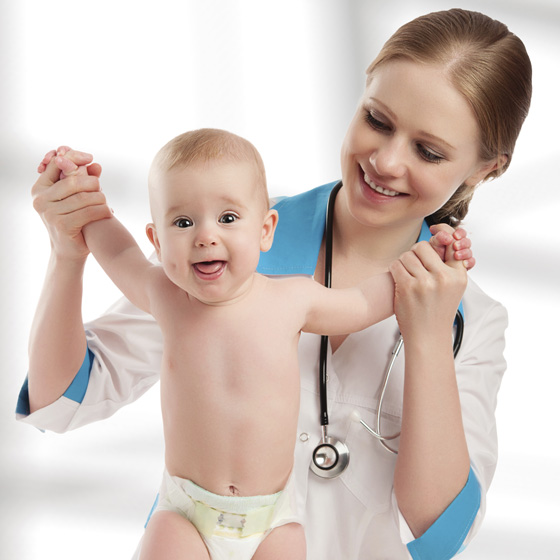The Impact of Maternal Age on Maternal and Neonatal Outcomes among Primipara Mothers at SMCH
Abstract:
Childbirth is one of the most awaited and cherished events in a woman's life, wherein she steps into a world of creation, such as becoming a mother. Maternal age ≥35 at the anticipated date of delivery is considered advanced maternal age (AMA). Fertility decreases with age, particularly beyond the mid-thirties. Pregnancy-related difficulties are more likely to occur in women who conceive later in life. The study's goal is to evaluate how maternal age affects primiparous mothers' pregnancy outcomes.to evaluate how maternal age affects newborn outcomes in primiparous women. to link the chosen demographic factors of primiparous mothers with the effect of maternal age on pregnancy and newborn outcomes. A quantitative descriptive study of primiparous women aged 17 to 35 years was carried out.50 primiparous women were given a self-structured questionnaire as a means of gathering data. Non-probability purposive sampling was used to choose the participants. SPSS statistical analysis was used to analyse the data. 29 (58%) primiparous mothers experienced labor lasting 10 to 12 hours, 36 (72%) had a normal vaginal delivery, 33 (66%) had babies weighing 2.5 to 3.5 kg, 38 (76%) had a history of education below the 12th standard, and 36 (72%) had a genetic history of preterm birth. The duration of labour (ⁿ2=11.064, p=0.026) showed a statistically significant association with the level of maternal risk factors among primiparous mothers at the p<0.05 level, while the other demographic variables did not exhibit a statistically significant association with the level of maternal risk factors among primiparous mothers.
References:
[1]. Atteya Abbasi, et al., 2021. Maternal age and pregnancy outcome: Risks and benefits. PJMHS 15(3), 873.
[2]. Blomberg, M., Tyrberg, R B., Kjølhede, P., 2014. Impact of maternal age on obstetric and neonatal outcome with emphasis on primiparous adolescents and older women: a Swedish medical birth register study. BMJ. 4(11): e005840.
[3]. Burak Elmas, Aysegul Bestel, Ozge Sehirli Kinci, 2022. Comparison of Delivery Results of Adolescent-Age Pregnant Women and Older Pregnant Women with Those in Normal Age Range. East J Med. 28(1): 150-157.
[4]. Md. Zahangir Alam, et al., 2022. Impact of Maternal Age on Obstetric and Neonatal Outcome in Primiparous Women. Sch Int J Obstet Gynec, 5(5): 254-260.
[5]. Chandra-Mouli, V, Camacho, A V., Michaud PA. 2013, guidelines on preventing early pregnancy and poor reproductive outcomes among adolescents in developing countries. Journal of Adolescent Health. May 1;52(5):517- 22.
[6]. Fitzpatrick, K., Tuffnell, D., Kurinczuk, J., Knight, M., 2016, Pregnancy at very advanced maternal age: a UK population-based cohort study. BJOG: Int JObsGyn. 124(7):1097-106.
[7]. de Vienne, C M., Creveuil, C., Dreyfus, M., 2009, Does young maternal age increase the risk of adverse obstetric, fetal and neonatal outcomes: a cohort study. Eur J Obstet Gynecol Reprod Biol, 147:151–6.
[8]. Demirci, O., Yılmaz, E., Tosun, Ö., Kumru, P., Arınkan, A., Mahmutoğlu, M., et al., 2016, Effect of young maternal age on obstetric and perinatal outcomes: results from the tertiary center in Turkey. Balkan Med J, 33:344-9.
[9]. Elenis, E., Svanberg, A. S, Lampic, C., Skalkidou, A., Åkerud, H., Sydsjö, G., 2015, Adverse obstetric outcomes in pregnancies resulting from oocyte donation: a retrospective cohort case study in Sweden. BMC Pregnancy Childbirth. 15(1):247.
[10]. Goisis, A., Remes, H., Barclay, K., Martikainen, P., Myrskylä, M., 2017, Advanced maternal age and the risk of low birth weight and preterm delivery: a within-family analysis using Finnish population registers. Am JEpidemiol. 186(11): 1219-26.
[11]. Kim, E. H., Lee, J., Lee, S. A., Jung, Y. W., 2022, Impact of Maternal Age on Singleton Pregnancy Outcomes in Primiparous Women in South Korea. J. Clin. Med. 11, 969. https://doi.org/10.3390/jcm11040969
[12]. Leppälahti, S., Gissler, M., Mentula, M., et al., 2013, Is teenage pregnancy an obstetric risk in a welfare society? A population-based study in Finland, from 2006 to 2011. BMJ Open ;3: e003225.
[13]. Schummers, L., Hutcheon, J. A., Diaz, S., Williams, P. L., Hacker, M. R., Vander, T. J., et al., 2018, Association of the short interpregnancy interval with pregnancy outcomes according to maternal age. JAMA Int Med. 2018;178(12):1661-70.
[14]. Lisonkova, S., Potts, J., Muraca, G. M., Razaz, N., Sabr, Y., Chan, W. S., et al., 2017, Maternal age and severe maternal morbidity: a population-based retrospective cohort study. PLoS Med, 14(5): e1002307.
[15]. Marvin-Dowle, K., Kilner, K., Burley, V. J., et al., 2018. Impact of adolescent age on maternal and neonatal outcomes in the Born in Bradford cohort. BMJ Open; 8: e016258. Doi:10.1136/bmjopen- 2017-016258.
[16]. Neal, S., Channon, A A., Chintsanya, J., 2018. The impact of young maternal age at birth on neonatal mortality: Evidence from 45 low and middle income countries. PLoS ONE, 13(5): e0195731. https://doi.org/10.1371/journal.pone.0195731
[17]. Olausson, P. O., Cnattingius S, Haglund, B., 1999, Teenage pregnancies and risk of late fetal death and infant mortality. Br J Obstet Gynaecol, 106:116–21.
[18]. Rasamoelison, R. J., Rambeloson, S. H., Samena, H. C., Robinson, A. L., 2022. Impact of extreme maternal age on neonatal outcomes. Int J Contemp Pediatr, 9: 1016-21.
[19]. Rathnamma, P., Deepika, N., 2020, Significance of age at first pregnancy and its effect on maternal and perinatal outcome. Indian J Obstet Gynecol Res, 7(3):415-420.
[20]. Sheen, J. J., Wright, J. D., Goffman, D., Goldberger, A. R., Booker, W., Siddiq, Z., et al., 2008, Maternal age and risk for adverse outcomes. AmJObs Gyn, 219(4):390-1.
[21]. Sydsjö, G., Pettersson, M. L., Bladh, M., Svanberg, A. S., Lampic, C., Nedstrand, E., 2019, Evaluation of risk factors’ importance on adverse pregnancy and neonatal outcomes in women aged 40 years or older. BMC Pregnancy Childbirth. 19(1):92.
[22]. Talukdar, R. K., Majumdar, M. K., Marak, B. Ch., 2016. Study of neonatal outcome in primiparous women in different age groups in our population. Sch. J. App. Med. Sci., 4(11C):4017-4022.
[23]. Tannia Tembo, et al., 2020, The association of maternal age with adverse neonatal outcomes in Lusaka, Zambia: a prospective cohort study. BMC Pregnancy and Childbirth, 20:684.
[24]. Waldenström, U., Ekeus, C., 2017. Risk of labor dystocia increases with maternal age irrespective of parity: a population-based register study. Acta Obstet Gynecol Scand; 96:1063–1069.
[25]. Waldenström, U., Cnattingius, S., Vixner, L., Norman, M., 2016, Advanced maternal age increases the risk of very preterm birth, irrespective of parity: a population-based register study. Int J ObsGyn.124(8):1235-44.
[26]. Sandeep, S., & Shanthi, E., 2021. Study on Impact of Maternal Age on Pregnancy Outcome at a Tertiary Care Hospital Production, International Journal of Research in Pharmaceutical Sciences. 235-238.
[27]. Satapathy, P., Khatib, M. N., Gaidhane, S., Zahiruddin, Q. S., et al., 2024, Adverse pregnancy outcomes in maternal malarial infection: A systematic review and meta-analysis. New Microbes New Infect. 30;62:101474. Doi: 10.1016/j.nmni.2024.101474.
[28]. Vinod Kumar Nelson, et al., 2024. Adverse Maternal and Fetal Outcomes in Pregnancies Complicated by Diabetes Mellitus: A Case Series, Texila International Journal of Public Health Special Issue- Doi: 10.21522/TIJPH.2013.SE.24.05.Art020.

